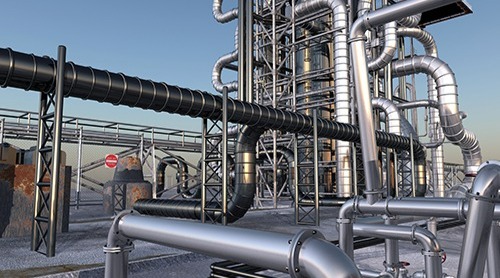EVERYTHING YOU NEED TO KNOW ABOUT HEAT TRACING

Heat tracing is a vital process for any tool or system that may need freeze protection. Using self-regulating technology, heat tracers work to raise or maintain temperatures in pipes, vessels and equipment that may be exposed to colder environments.
There are many industries currently utilizing heat tracers, including oil, gas and electrical power. Through their specific application use, heat tracers are capable of regulating even in the toughest, coldest conditions. Here is a closer look at what heat tracers can do for your equipment:
They provide outstanding freeze protection in harsh climates.
During cold winter months, snow and ice become a major threat to pipes and equipment. In order to prevent freezing from disrupting production, heat tracers are used to provide energy for melting anything frozen and ensure everything stays at a reasonable temperature.
One example of a heat tracer in action is the Thermon KRS self-regulating cable, which is designed specifically to melt snow and ice. The cables have incredible strength–enough to withstand being buried under concrete. Once underground, the heat tracer surveys the temperature of the surrounding concrete. If the temperature is freezing or below, it maximizes its output of power, heating the ground and melting snow and ice.
Thermon also offers the RGS self regulating heating cable that is designed specifically for melting snow and ice in roof and gutter applications. This cable is exposed directly to harsh environmental conditions and when placed in contact with snow or ice, it increases its power output. Once melted, the cable reduces its power to maintain a steady, warm temperature.
A sustained and balanced hot water supply can be achieved.
Because of heat tracers’ self-regulating technology, they can be utilized for maintaining specific temperatures. In the case of hot water supplies, water tanks can easily be heated and maintained.
Thermon’s HSX self-regulating heating cable is designed to complete this task. These cables can form a WarmTrace system, which replaces the complex maze of return pipes and eliminates the cost of continuously running pumps. Water will also be saved since the constant regulated temperatures will eliminate the wait time for water to heat up.
Heat tracing is crucial to the oil and gas industry.
The petroleum industry is heavily reliant on heat tracing in a number of applications, working to both heat up and cool down the equipment used to produce, process and store oil. In the upstream sector of the industry, elevated temperatures are needed to bring oil or natural gas to the surface. Conversely, the downstream sector calls for winterization during refining and distributing the products.
Heat tracing is also needed in many other aspects in the oil and gas industry, including exploration and production, gas processing, heavy oils and synfuels processing, petrochemical and chemical processing, refining and in storage terminals. With heavy involvement in all of these processes, the importance of heat tracing is exponential.
Want to learn more about heat tracing?
We’d love to help you out. Give us a call at 1.800.333.7519 or contact us to speak with an ACI representative today.

